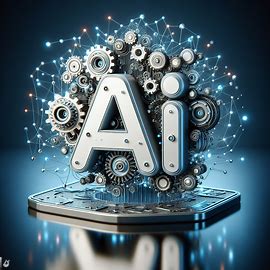We will introduce you to 9 AI tools that can boost your productivity in various domains, such as writing, coding, design, marketing, and data analysis. These tools use different AI techniques, such as natural language processing, computer vision, machine learning, and deep learning, to create and enhance content, solve problems, and make decisions.
9 AI Tools is transforming the way we work, learn, and live. AI can help us automate tasks, optimize processes, and generate insights that would otherwise take hours or days to achieve. AI can also augment our human capabilities and enable us to work smarter and faster.
Userpilot is an AI-powered user onboarding and retention platform that helps you create engaging and personalized experiences for your users. Userpilot uses AI to analyze user behavior, segment users, and deliver the right message at the right time. Userpilot also has an AI writing assistant that can generate content for your in-app messages, such as modals, tooltips, and banners.
CopyAI is an AI-powered copywriting tool that helps you generate catchy and creative content for your marketing campaigns. CopyAI uses a large language model called GPT-3 to produce text based on your input and context. CopyAI can help you write social media posts, emails, blog titles, landing pages, slogans, and more.
Synthesia is an AI-powered video creation platform that lets you create realistic and engaging videos in minutes. Synthesia uses computer vision and deep learning to synthesize video content from text, images, and audio. Synthesia can help you create video ads, testimonials, tutorials, presentations, and more.
Grammarly is an AI-powered writing assistant that helps you write clear, correct, and effective content. Grammarly uses natural language processing and machine learning to check your spelling, grammar, punctuation, and tone. Grammarly also offers suggestions to improve your vocabulary, style, and clarity.
SurferSEO is an AI-powered SEO tool that helps you optimize your website and content for search engines. SurferSEO uses natural language processing and machine learning to analyze your keywords, competitors, and audience. SurferSEO also offers suggestions to improve your content structure, readability, and relevance.
DALL-E is an AI-powered image generator that can create images from text descriptions. DALL-E uses a large language and vision model called CLIP to understand natural language and generate images that match the text. DALL-E can help you create illustrations, logos, icons, and more.
Illustroke is an AI-powered illustration tool that can turn your text prompts into ready-to-use SVGs. Illustroke uses natural language processing and computer vision to interpret your text and generate vector graphics that suit your style and theme. Illustroke can help you create icons, diagrams, charts, and more.
Smartling is an AI-powered language translation and content localization platform that helps you reach global audiences. Smartling uses natural language processing and machine learning to translate and localize your content across languages, cultures, and formats. Smartling can help you translate and localize websites, apps, software, documents, and more.
MonkeyLearn is an AI-powered data analysis platform that helps you extract insights from text and image data. MonkeyLearn uses natural language processing and computer vision to classify, extract, and analyze data from various sources, such as customer feedback, social media, surveys, and more. MonkeyLearn can help you understand customer sentiment, identify trends, and discover opportunities.
AI tools can help you work smarter and faster by automating and enhancing various tasks, such as writing, coding, design, marketing, and data analysis. Some of the best AI tools for productivity are Userpilot, CopyAI, Synthesia, Grammarly, SurferSEO, DALL-E, Illustroke, Smartling, and MonkeyLearn. These tools use different AI techniques, such as natural language processing, computer vision, machine learning, and deep learning, to create and optimize content, solve problems, and make decisions.
Generating code from natural language descriptions or examples, using large language models that have been trained on massive code repositories. For instance, OpenAI’s Codex can produce Python code from plain English commands.
Completing code as developers type, using AI-powered coding assistants that can suggest code snippets, syntax, and parameters, based on the context and the user’s preferences. For example, GitHub Copilot can help developers write faster and better code with less effort.
Reviewing code for quality, performance, and security, using AI tools that can analyze code patterns, identify potential problems, and suggest fixes or improvements. For example, Amazon CodeWhisperer can help developers find and fix bugs in their code.
Refactoring code for readability, maintainability, and efficiency, using AI tools that can automate the process of restructuring code, making it easier to update and modify over time. For example, DeepCode can help developers refactor their code with 9 AI Tools suggestions.
Testing code for functionality, reliability, and compatibility, using AI tools that can generate test cases, execute tests, and report results. For example, Testim can help developers create and run automated tests for web and mobile applications.
AI can help developers work smarter and faster by automating and enhancing various tasks in the software development process. However, AI is not a replacement for human coders, but rather a complement that can augment their skills and creativity.

